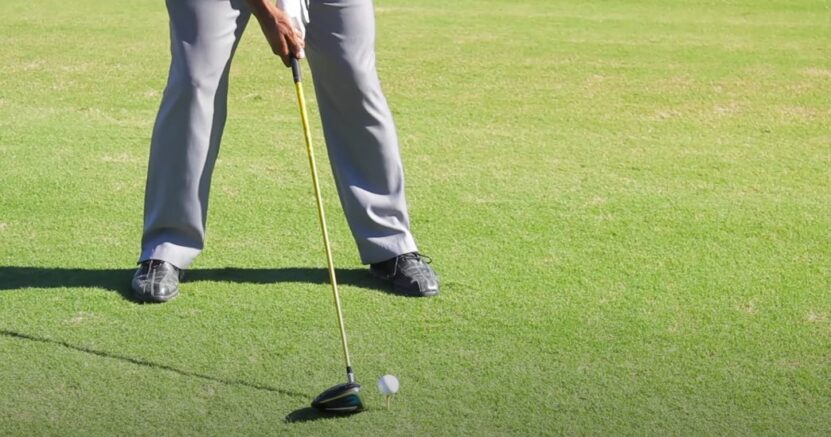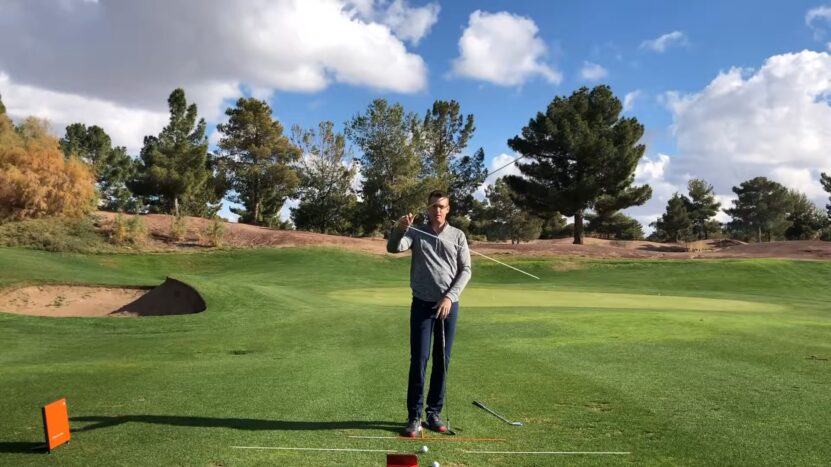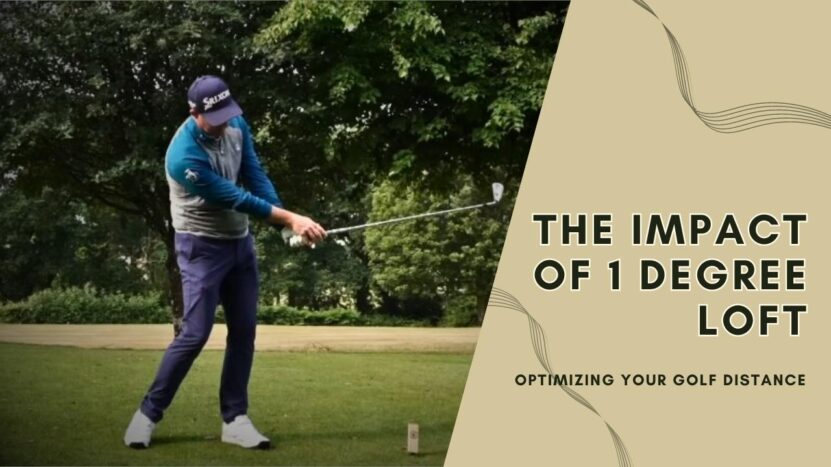Golf, often touted as a game of precision, involves a blend of skill, strategy, and an understanding of the equipment that you are using. In a game where every stroke matters, being aware of the intricacies of your gear can provide an invaluable advantage on the course. One such subtlety is the degree of loft on your golf clubs. This article dives into the fascinating world of golf science, exploring how a seemingly trivial 1-degree change in loft can significantly impact your distance.
The Basics of Loft and its Impact on Ball Flight

The term ‘loft’ in golf refers to the angle of the clubface as it relates to the shaft. When you swing your club, the loft is what imparts an upward force to the ball, giving it lift. This lift, when combined with the forward momentum from your swing, results in the arc or the trajectory that your ball takes. It’s the first piece in our puzzle of understanding how 1 degree of loft affects distance.
Different clubs have varying degrees of loft. For instance, drivers have the lowest loft (usually between 8 and 15 degrees) to maximize distance, while wedges have a high loft (between 45 and 60 degrees) for a shorter, controlled shot. The chosen club, with its specific loft angle, thus directly influences the ball’s trajectory, which is a vital determinant of how far the ball will travel.
One may think that a lower loft (hence a flatter trajectory) should result in a farther shot. However, golf isn’t that straightforward. If the loft is too low, the ball won’t have enough lift to maintain its flight, thereby reducing distance. Conversely, a higher loft could lead to too much lift, causing the ball to ascend sharply but not cover as much distance forward. Hence, an optimal balance is crucial for maximizing distance.
Exploring the Concept of Launch Angle and its Effect on Distance
Launch angle, often confused with loft, refers to the initial angle at which the ball leaves the clubface. This, combined with the loft, plays a critical role in determining the distance a ball covers. The launch angle is influenced by several factors, including the angle of attack, clubhead speed, and, of course, the loft.
An optimal launch angle helps the ball attain an ideal trajectory that maximizes carry (distance the ball travels in the air) and roll (distance it covers after landing). While a higher launch angle can result in greater carry, it could reduce roll due to a steeper descent. Conversely, a lower launch angle may increase roll but decrease carry. Striking the right balance between carry and roll, therefore, is crucial for maximizing total distance.
In essence, a change in 1 degree of loft can affect the launch angle, thus altering the carry and roll. This subtle modification can, in turn, significantly impact the distance. The next section will delve deeper into this phenomenon, elucidating how loft changes can dramatically affect distance.
How 1 Degree of Loft Adjustment Can Make a Significant Difference in Distance

Adjusting the loft by a single degree may seem minor, but it can translate into a significant change in distance. While the exact difference in yardage depends on various factors, including clubhead speed, ball type, and environmental conditions, a rule of thumb suggests a potential change of 2 to 3 yards for every degree of loft adjustment on a driver.
For example, reducing the loft from 11 degrees to 10 on your driver could potentially increase the distance by about 2 to 3 yards. This change could be even more dramatic for golfers with higher swing speeds. However, it’s important to remember that while less loft can increase distance, it can also make the shot harder to control, potentially affecting accuracy.
It’s fascinating how a seemingly minuscule 1-degree change can translate into a noteworthy difference in the course. The relationship between loft and distance isn’t linear, making it an intricate aspect of the game requiring careful attention and understanding.
Analyzing the Relationship Between Loft and Spin Rates

The interplay between loft and spin rates adds another layer of complexity to our understanding of golf physics. The spin rate refers to the speed at which the ball spins after impact with the clubface. Loft impacts the backspin on the golf ball, which significantly affects the trajectory and, consequently, the distance the ball travels.
A higher loft increases the backspin, which can cause the ball to climb higher and fall steeper, reducing the roll. On the contrary, a lower loft decreases backspin, potentially increasing the roll but decreasing the carry. Thus, understanding the delicate relationship between loft, spin rates, and their collective influence on distance becomes crucial.
Adding or reducing 1 degree of the loft can significantly alter the spin rate, thus influencing the trajectory and, ultimately, the distance. Typically, a decrease in loft by 1 degree could reduce the spin rate by approximately 200-300 rpm, depending on other factors like clubhead speed and angle of attack.
The Trade-off Between Distance and Accuracy with Loft Adjustments
While manipulating the loft can undoubtedly affect the distance, it’s critical to consider the trade-off between distance and accuracy. A common misconception among golfers is that reducing loft i.e., hitting the ball further is always beneficial. However, golf is not just about distance but also precision.
A lower loft, while increasing the potential for distance, reduces backspin, making the ball flight less stable. This instability can cause the ball to veer off the intended line, reducing accuracy. In contrast, a higher loft increases backspin, providing more stability and control, but may decrease the distance.
Hence, when adjusting the loft even by a single degree it’s important to weigh the increased distance against the potential loss of accuracy. An understanding of this trade-off is crucial, particularly in challenging course conditions or when the pressure is high.
The Impact of Clubhead Speed on Loft and Distance
Club head speed, another critical determinant of distance, is intricately linked with loft. It refers to the speed at which the clubhead is moving at the point of impact with the ball. Higher clubhead speeds generate more ball speed and, consequently, more distance.
Golfers with higher clubhead speeds can generally benefit from a lower loft since they can generate enough lift from their swing speed alone. Conversely, those with slower swing speeds may require a higher loft to optimize carry and overall distance.
Clubhead speed also interacts with loft to influence spin rates. Golfers with higher clubhead speeds produce more spin, allowing them to use lower-lofted clubs without losing stability in flight. Therefore, understanding your clubhead speed can help you make more informed decisions when tweaking the loft.
Factors That Influence the Optimal Loft for Individual Golfers
The optimal loft isn’t a one-size-fits-all concept it’s largely individual and depends on several factors. These include the golfer’s swing characteristics (such as clubhead speed and angle of attack), the ball used, and even environmental factors like wind and temperature.
For instance, golfers with a negative angle of attack (hitting down on the ball) might benefit from a higher loft to maximize distance. Conversely, those with a positive angle of attack (hitting up on the ball) may achieve better results with a lower loft.
Moreover, environmental factors can influence how the ball behaves in flight. On windy days, a lower loft might be advantageous to minimize the effect of the wind on the ball flight. Similarly, in colder temperatures, where the ball doesn’t travel as far, a higher loft might be beneficial.
The Role of Equipment Technology in Maximizing Distance Through Loft Adjustments
Modern golf technology has introduced adjustable drivers that allow golfers to alter the loft to suit their needs. This development is a game-changer, enabling golfers to modify their equipment based on the course conditions and their swing characteristics on a given day.
Adjustable drivers are particularly useful because they provide the flexibility to increase or decrease loft as needed. If you’re battling a headwind, you might increase the loft to maximize carry. Or, if your swing feels quicker than usual, you could reduce the loft to benefit from the additional clubhead speed.
Furthermore, advancements in golf ball technology mean that today’s balls respond differently to loft changes compared to those of the past. Modern golf balls are designed to minimize spin on longer shots (where a lower spin is desirable), further enhancing the distance gains from loft adjustments.
Real-life Examples and Case Studies Showcasing the Effects of 1 Degree of Loft Change
Let’s look at some real-life examples to understand the effect of a 1-degree loft change. In a study conducted by Golf Digest with a robot swinging the club, it was found that decreasing the loft from 10.5 degrees to 9.5 degrees led to an increase in distance of 2.6 yards, reinforcing the assertion that a loft reduction can enhance distance.
In another instance, professional golfer Phil Mickelson famously added 2 degrees of loft to his driver before the 2006 Masters Tournament. Despite the increase in loft (which usually reduces distance), Mickelson won the tournament, demonstrating the importance of control and accuracy over mere distance.
Such instances highlight the impact of even minor loft adjustments. However, they also underscore the need for individual optimization—what works for one golfer or in one scenario may not work in another.
In a quest to maximize your golf game, exploring the standard of par 72 and the equality among golf courses becomes essential, as does understanding the impact of loft degrees on distance.
Final Words
Understanding the effects of loft on distance is a crucial aspect of golf strategy. A mere 1-degree change in loft can significantly influence not just the distance, but also the trajectory, spin rate, and accuracy of the shot. The interplay of these factors is what makes golf such a fascinating and nuanced sport.
However, it’s also important to remember that golf is a game of skill and adaptability. While knowledge of equipment intricacies like loft can provide an edge, it’s the golfer’s ability to leverage this understanding, adapt to varying conditions, and execute shots that ultimately make the difference.

